Blackberry lily, a.k.a. leopard lily, isn’t really a lily. It’s a type of iris. At weedom, these plants were spread by seeds from a single plant that we had obtained from a farmer’s market friend, who has since departed earthly life. R.I.P.. This species was an exotic import that was maintained in Thomas Jefferson’s garden, she’d told us, and the Monticello Gardens website concurs. Upon organizing this prolific plant, we observed the golden to orange roots, surmised that it had to be medicinal, and found that it truly had a firm foothold in Traditional Chinese Medicine, playing a part in at least 50 formulations.
The name changers have gotten to blackberry lily too, so you’ll find it by looking up Belamcanda chinensis, or Iris domestica, it’s newer Linnean name. Hailing originally from Asia, this long cultivated medicinal plant made its way around to other parts of the world as an ornamental, escaping the boundaries of the landscape to take its place in the wild of many temperate or subtropical climates around the world. It occupies most of the states in the U.S.
Choosing among weeds and intentionally placed plants in the landscape of weedom is an increasingly difficult process. We’ve taken to re-homing some of the more useful plants, because it’s a tragedy to waste the ones that we have to remove.
Blackberry lily is able establish a permanent home in USDA hardiness zones 4 to 10b. It will readily spread by seed, and usually bloom in the second summer season of life. At weedom, we see blooms from July through August in northernmost zone 6. The blooms form a spiral twist as they close, then a green oval, 3 chambered pod forms. As summer turns to fall, these pods turn brown, then the outer coverings fall off, revealing a blackberry looking cluster of very dark seeds. These dry and eventually fall, producing new plants nearby in mid to late spring.
A member of the family Iridaceae, the Blackberry lily spreads by shallow rhizomes in hard packed sandy or clay like soils. It tolerates moist to dry conditions, and is fairly drought tolerant, which is why it continues to do well at weedom. These plants will tend to topple over in loose soil, and in very windy conditions once the pods form on the long flowering stems. They don’t like chronically wet, poorly draining conditions.
Leaves of blackberry lily are about 10 inches (25cm long), lance shaped and 8 to 14 of them emerge in sheath-like manner from the stem in a flat fanlike pattern common to the iris family. Margins of the hairless leaves are smooth.
A smooth, hairless flowering stem emerges from the second year plant and produces a series of blooming branches at the top. These blooms are about 2-3 inches across, with 6 petals or tepals, and both male (3 stamens and anthers) and female (1 ovary) reproductive structures. Flowers are usually orange with reddish speckles, and lighter orange to yellow at the center. They open in the morning, and may close by midday in bright sun, but persist much later in the day in partial shade. Each 3 chambered pod forms soon after the flower closes, and these persist for many weeks until they dry out, lose their coverings and reveal mature black seeds within.
The entire blooming plant reaches about 2-3 feet in height in the growing conditions at weedom. Much larger plants are reported in warmer climates such as the Philippines.
Cracking open A Barefoot Doctors Manual of traditional and modern Chinese medicine reveals She-kan or She-gan, a medicinal plant of numerous colorful aliases, among which (in older style transliteration) are:
Lao-chun shan, the lord’s fan,
ye-kuei shan, wild devil’s fan
k’ai-hou chien, throat splitting sword
liang-mien-tzu, double face
hsien=jen-chiang, fairy’s palm
A half century ago, the common uses were of 9-15 gram (per day) decocted doses of the rhizoma belamcandae for sore throat, tonsillitis, breast abcesses, cough, wheezing with excess mucus, asthma, pneumonia, poisonous snake bites and mad dog bites. It was used topically by agricultural workers to address various skin rashes. This was considered a cooling, anti-inflammatory, detoxifying herb for short term use. It was, and still is contraindicated for pregnant women, because the root juice is believed to be abortive in early pregnancy.
Wandering through more recent T.C.M. sources, we see that the dose is reduced to about 5-10 grams of powdered root per day. Perhaps cultivation has produced more potent plant material. She gan is seen as a strongly bitter, cooling and drying herb which alleviates Yang (heat) excesses or Yin deficiencies. While it has many applications, the chief affinity is said to be for the lungs.
Of concern is the possibility of adulteration of the medicinal Iris domestica, She-gan, with the related plants, Iris tectorum (purple-blue flowers) and Iris dichotoma, (vesper iris with purple blooms that open in late afternoon-evening). Chemotyping has been done to distinguish among these species, and prevent distribution of contaminated She gan.
Medicinal uses in various other countries include:
Malaysia- treatment for gonorrhoeia, medicinal bath after childbirth
Malabar- antidote for poisoning, and as an antimicrobial
Vietnam, diuretic and snakebite remedy, treatment for swollen liver and spleen
Sumatra, poultice for lumbago (low pack pain)
Numerous active constituents have been found in the leaves and roots of this plant, including the isoflavonoid glucosides, tectoridin and iridin. Some other compounds of significance are belalloside A , belalloside B, and belamphenone, resveratrol, iriflophenone, irisflorentin, tectorigenin, irilin D, iristectorin A, iristectorin B, hispiduloside, androsin, irigenin, daucosterol, stigmasterol-3-O-glucoside, quercetin, kaempferol, shikimic acid, gallic acid, ursolic acid, betulin, betulonic acid, betulone, luteolin, apigenin, and jaceoside.
While phytoestrogens, tectorigenin and irigenin, inhibited prostate cancer cells in vitro, there have been contradictory results in some breast cancer cell lines, showing both stimulation and inhibition of proliferation. Various other compounds have shown ability to inhibit cell lines of human lung tumors, colon tumors, human leukemia cell lines 6T-CEM and HL-60.
Tectorigenin has been found to have extensive anti-inflammatory effects as well as antimicrobial effects.
Non polar solvent extract of the roots yielded several compounds which showed anti trypanosomal activity.
Isoflavones found in the leaves of blackberry lily were shown to inhibit alpha-glucosidase activity, in vitro, thereby indicating a mechanism for this plant’s observed ability to inhibit blood sugar spikes when fed to both normal and streptozosin induced diabetic rats.
Various of the compounds in Iris domestica can inhibit hyaluronidase, which might be part of the explanation of its traditional use for snakebites. Some claim that it is used for cobra bites, although the venom of those snakes contain a dumpster of various compounds that are neurotoxic, cardiotoxic as well as hyaluronidases, which enhance the spread of the other components throughout the body.
This plant is credited with anti-viral activity against influenza, herpes, adenovirus, echovirus, and coxsackie virus. It also inhibits various fungi, particularly various types which affect the skin.
She gan has been used to prevent platelet aggregation and thrombosis, so you can imagine that it could interact with blood thinning pharmaceuticals.
Very possibly, people have Chinese medicine growing nearby, or in their gardens, without their prior awareness. Check out the blackberry lily, and make friends with it. It seems to medicinally cover a lot of what Echinacea will do, is easy to grow, and looks great.
Where We Dig
1. Wu C, Shen J, He P, et al. The α-Glucosidase Inhibiting Isoflavones Isolated from Belamcanda chinensis Leaf Extract. Rec Nat Prod. 2012;6(2):110-120.
2. She Gan (Rhizoma Belamcanda): Uses, Benefits, Side Effects, Warnings. January 21, 2022. Accessed August 20, 2024. https://tcmly.com/she-gan/
3. Gębalski J, Graczyk F, Załuski D. Paving the way towards effective plant-based inhibitors of hyaluronidase and tyrosinase: a critical review on a structure–activity relationship. J Enzyme Inhib Med Chem. 37(1):1120-1195. doi:10.1080/14756366.2022.2061966
4. Vélez-Gavilán J. Iris domestica (blackberry lily). CABI Compendium. 2018;CABI Compendium:62815878. doi:10.1079/cabicompendium.62815878
5. Iris domestica (Blackberry Lily, Chinese Blackberry Lily, Chinese Leopard Flower, Dwarf Tiger Lily, Leopard Lily) | North Carolina Extension Gardener Plant Toolbox. Accessed August 19, 2024. https://plants.ces.ncsu.edu/plants/iris-domestica/
6. Blackberry Lily, <em>Belamcanda chinensis</em> or <em>Iris domestica</em>. Wisconsin Horticulture. Accessed August 19, 2024. https://hort.extension.wisc.edu/articles/blackberry-lily-belamcanda-chinensis-or-iris-domestica/
7. Blackberry Lily. Monticello. Accessed August 19, 2024. https://www.monticello.org/house-gardens/in-bloom-at-monticello/blackberry-lily/
8. Woźniak D, Matkowski A. Belamcandae chinensis rhizoma – a review of phytochemistry and bioactivity. Fitoterapia. 2015;107:1-14. doi:10.1016/j.fitote.2015.08.015
9. Zhou H, Zhang Y, Liang H, et al. A novel multidimensional strategy to evaluate Belamcanda chinensis (L) DC and Iris tectorum Maxim based on plant metabolomics, digital reference standard analyzer and biological activities evaluation. Chinese Medicine. 2021;16(1):85. doi:10.1186/s13020-021-00494-3
10. Hunan Zhong yi yao yan jiu suo, ed. A Barefoot Doctor’s Manual. Rev. & enl. ed. Cloudburst Press ; distributed to the trade in the U.S.A. by S. Greene Press; 1977.





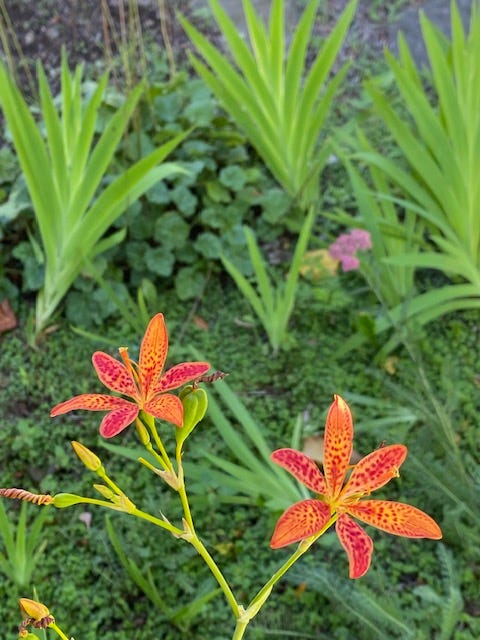
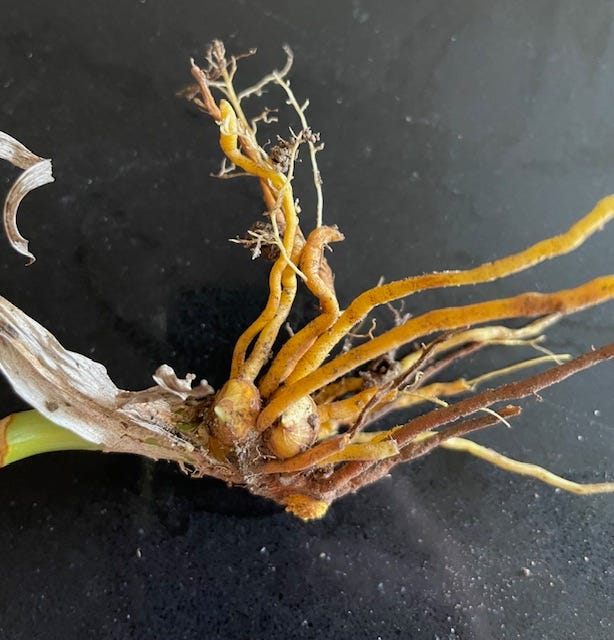

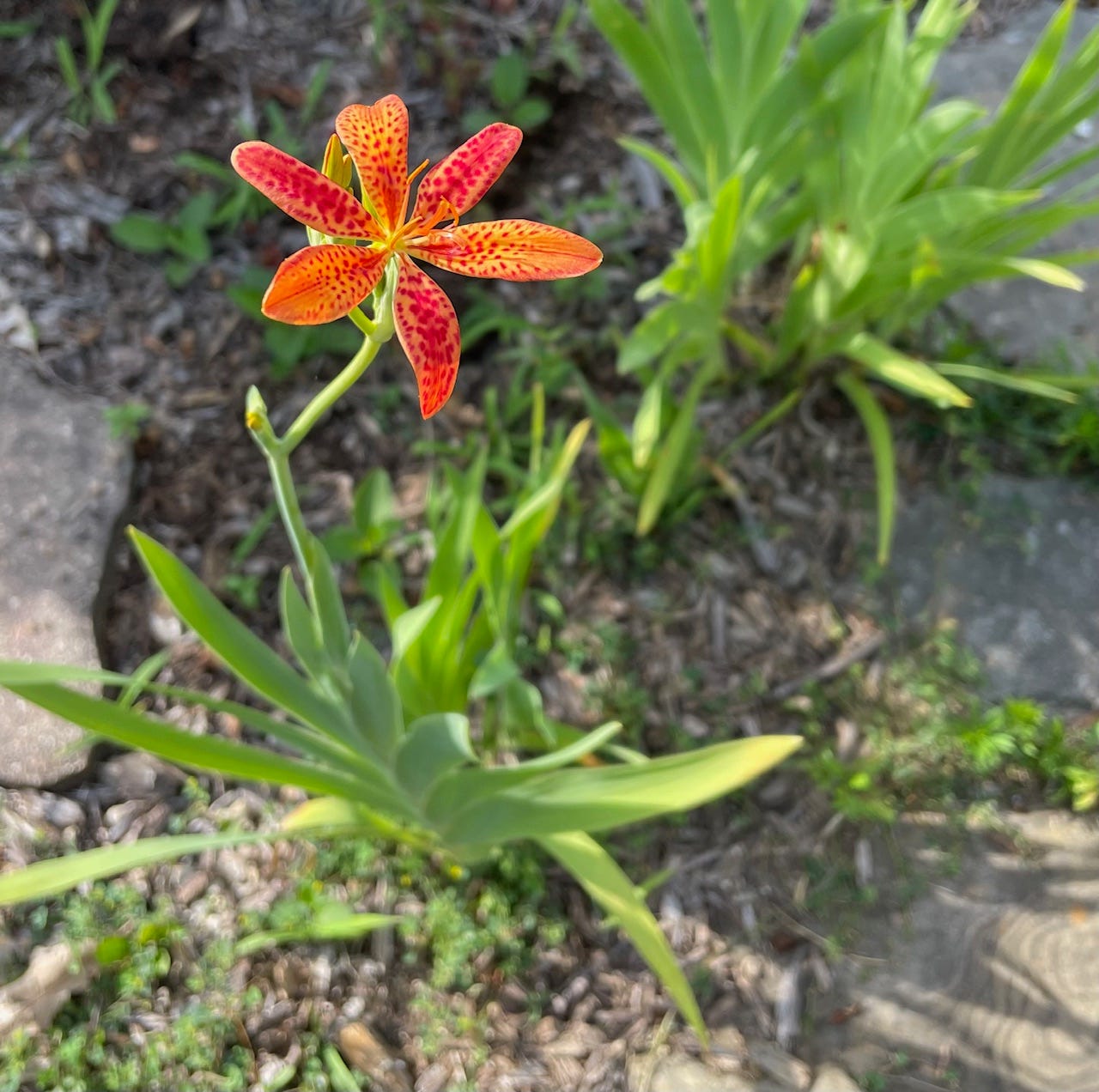
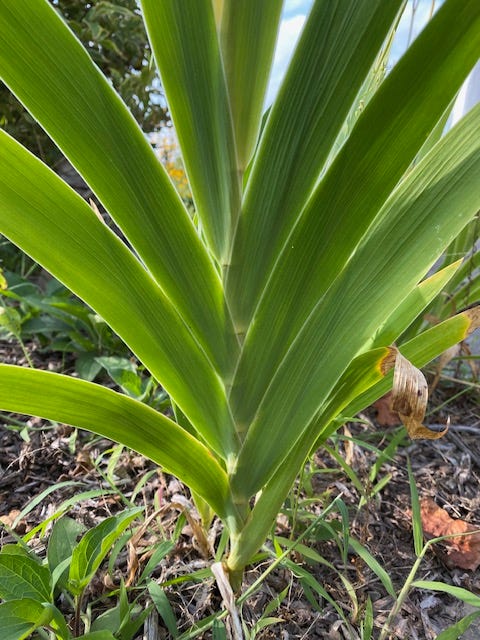
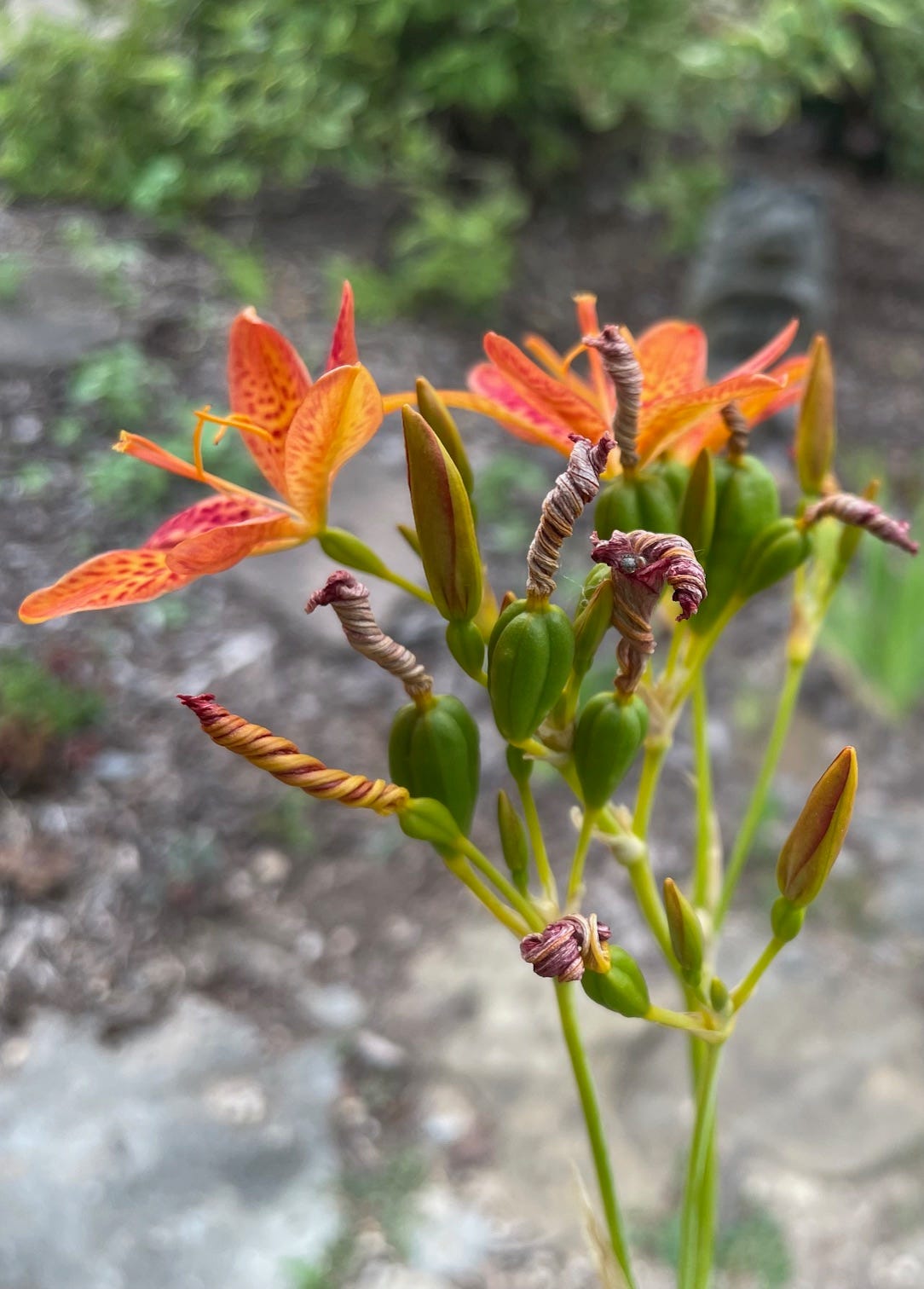
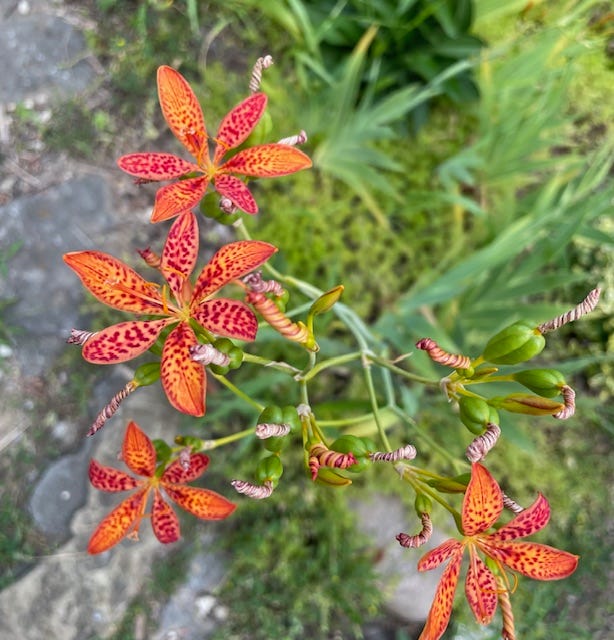


Thank you so much. It is wonderful learning about the plants. I have had these lilies for 25 years, had no idea of their medicinal properties.